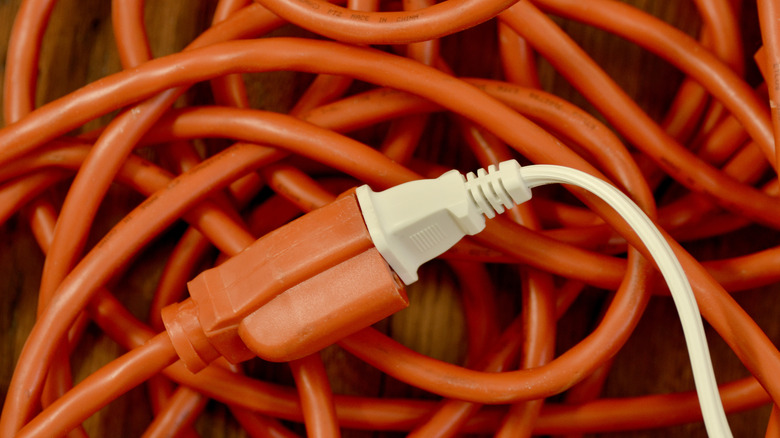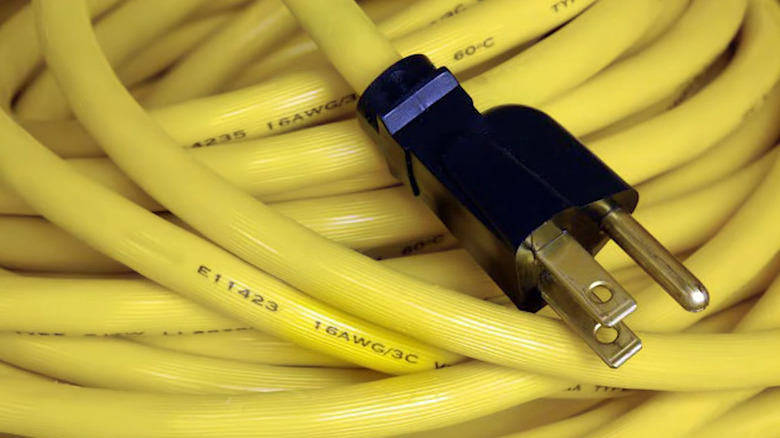How One Simple Extension Cord Mistake Could Cause A Fire In Your Home
Though they all plug in to help power your devices, extension cords aren't interchangeable. One of the biggest extension cord mistakes you can make is using the wrong gauge for the power level you need, as doing this could start a fire. Each extension cord has specific ratings, including gauge numbers, corresponding to their intended use. Using the incorrect gauge number with something that draws a high amount of power means your extension cord won't tolerate the current well and could overheat.
Just as every extension cord's tag lists whether it can be used indoors or outdoors and its length, it also includes the wattage and AWG, or American wire gauge number. For instance, you might have a cord with a 16 AWG label. This indicates the gauge is 16, the smallest gauge available in household extension cords. Gauge refers specifically to the thickness, or diameter, of the cord's conductor wire. The lower the number, the thicker the wire, and the higher the current capacity. The reverse is also true: the higher the number, the lower the current. The gauge also matters over distance. In any extension cord, the voltage naturally drops as it travels; thicker wires will offer less voltage drop, which makes them better for high-powered devices. Here's how to avoid making this simple, yet dangerous, mistake that puts your home at risk.
Finding the right gauge extension cord for powering up your belongings
Before you create a fire hazard by plugging an appliance into an extension cord, make sure you have the appropriate number gauge for the job to avoid placing significant strain on it. Assess your power needs and determine what will work best. If you're plugging in a hair dryer, for example, the same 16-gauge cord that powers your lamp could overheat, but would be fine used with your phone charger. Overall, the 16-gauge cords are generally considered suitable for most light-duty tasks. A 14-gauge cord is considered best for medium-duty power needs, like operating your television. A 12-gauge cord is heavy duty, suited for use with power tools, and 10-gauge is extra heavy duty. Observing and matching the cord to the right task is a necessary safety practice you must follow.
You can usually find the amperage on an item's packaging, the instructions, or the device manual, sometimes with a recommended extension cord gauge. Taking the time to do this small step will ensure you pick the right cord option. Also, don't overlook your extension cord's length. The longer the cord, the greater the resistance the current encounters, which can lead to voltage drops as it travels. Long cords need the thicker gauge — the lower number — for safe operation. Above all, remember that these cords are only intended as temporary power sources. You should never use them long-term or modify them as part of an extension cord hack.

